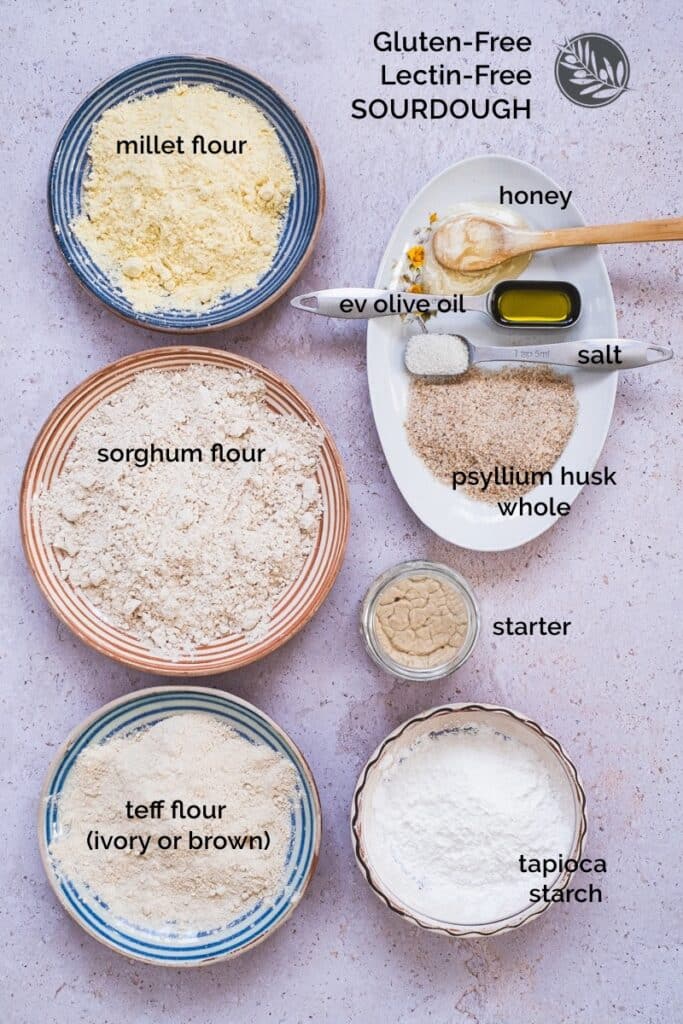So, you’re poking around trying to figure out gluten-free flour ingredients, eh? Let me tell ya, it ain’t as straightforward as just grabbing a bag and calling it a day. I definitely went through the wringer figuring this stuff out.

When I first dipped my toes into this whole gluten-free world – I think it was my cousin who suddenly couldn’t eat gluten, or maybe I just saw some fancy health blog post, my memory’s a bit hazy on the “why” – I just assumed, “Alright, gluten-free flour, simple enough.” I strolled into the grocery store, spotted a bag proudly declaring “Gluten-Free All-Purpose Flour,” and thought my job was done. Oh, how naive I was.
The Big Surprise: It’s a Cocktail!
The first real eye-opener for me was discovering that “gluten-free flour” is rarely, if ever, just one type of flour. Nope. It’s almost always a blend, a mix of different things. And every brand, every company, seems to have its own secret recipe, its own special little combination. I started squinting at the ingredient lists on those bags, and my head was spinning. “What in the world are all these powders?” I remember thinking.
I recall one of my early attempts to make some basic sugar cookies using one of those store-bought blends. They spread out on the baking sheet like sad, deflated balloons. And the taste? Well, “gritty” is a word that springs to mind. That’s when it dawned on me: I actually needed to understand what the heck was going into these flour mixes if I ever wanted to bake something decent.
Digging Into the Common Culprits
So, I rolled up my sleeves and started my own little experiments. My kitchen counter started to look less like a place for cooking and more like a mad scientist’s lab, with all sorts of bags and containers. Through all that mess, I figured out the usual ingredients you’ll bump into over and over again:
- Rice Flour (you’ll see White and Brown): This stuff is often the main base for a lot of blends. White rice flour is pretty bland, doesn’t add much flavor. Brown rice flour, on the other hand, gives a bit more of a nutty, earthy taste. Can also make things a bit more… textured, if you catch my drift.
- Tapioca Starch (sometimes called Tapioca Flour): This one’s great for adding a bit of chewiness and helping things get a nice golden-brown color. It’s super fine, almost powdery. Comes from the cassava plant, if you’re curious.
- Potato Starch: Now, don’t get this confused with potato flour! They’re different beasts. Potato starch is used to make things light and airy. Potato flour is heavier, made from the whole spud. Starch is just the starch part. Makes a real difference.
- Sorghum Flour: I started noticing this pop up more and more. It’s got a pretty mild, slightly sweet flavor. I found it works pretty well in things like cakes and cookies.
- Cornstarch: Yeah, plain old cornstarch. Often tossed in to help with lightness and texture, just like potato starch.
And then, there’s the stuff that tries to act like gluten. Because, you know, gluten is what gives regular bread and baked goods their stretch and structure. Without it, your stuff just falls apart. So, you’ll almost always find one of these guys:

- Xanthan Gum: This is a biggie. You only need a tiny bit, but it does a lot. It helps bind everything together and gives it some body. It’s trying its best to do what gluten does. Use too much, though, and your bake turns out… well, gummy and weird. Too little, and you’ve got a crumbly disaster. Figuring out the “just right” amount was quite the adventure, let me tell you.
- Psyllium Husk: You might see this, especially in recipes for gluten-free bread. It soaks up a ton of water and gets all gel-like. Helps with structure and chewiness.
My Own “Trusty” Basic Blend (After Much Toil)
After a whole lot of trial, error, and a few batches of pancakes that could’ve doubled as frisbees, I finally settled on a basic blend that I now mix up myself for most of my general baking. It’s nothing top-secret; plenty of folks use similar combinations. For me, it was about finding what tasted good and worked with the kind of recipes I like to make.
My go-to mix usually includes:
- A good portion of brown rice flour
- Some white rice flour to balance it out
- Potato starch
- Tapioca starch
- And here’s a key tip: I add a tiny bit of xanthan gum directly to each recipe, not into my big flour blend. That was a huge discovery for me – being able to control the gum for whatever specific thing I was baking.
Now, this blend isn’t a magic bullet for everything. Making good gluten-free bread is a whole different challenge, often needing heartier flours like buckwheat or even almond flour. And let’s be honest, some recipes just plain refuse to be converted to gluten-free, no matter how fancy your flour mix is. I once tried to make my aunt’s legendary dinner rolls gluten-free… let’s just say they ended up more like dense little bricks. That was a truly humbling experience, that was.
So, yeah, when you ask about “gluten-free flour ingredients” – it’s a whole universe. You start with what seems like a simple question, and before you know it, your kitchen is covered in five different kinds of white powder, and you’re muttering to yourself about the binding properties of various starches. It’s a learning curve, no doubt about it. But hey, every now and then, you nail a batch of really amazing gluten-free chocolate chip cookies, and that makes at least some of the headaches feel worthwhile. Just some of them.
